The land development cost breakdown in the US is crucial for anyone interested in real estate. This article explores the key components of land development costs, from land acquisition to construction expenses. It highlights the factors that influence these costs and shares tips on how to manage them effectively. By understanding the intricacies of budgeting and planning, developers can make informed decisions. This guide aims to simplify the world of land development and offers strategies for successful investments.
- Land prices vary by location.
- Construction costs include materials and labor.
- Permitting fees can add to total costs.
- Utility connections have additional expenses.
- Planning and design fees must be considered.
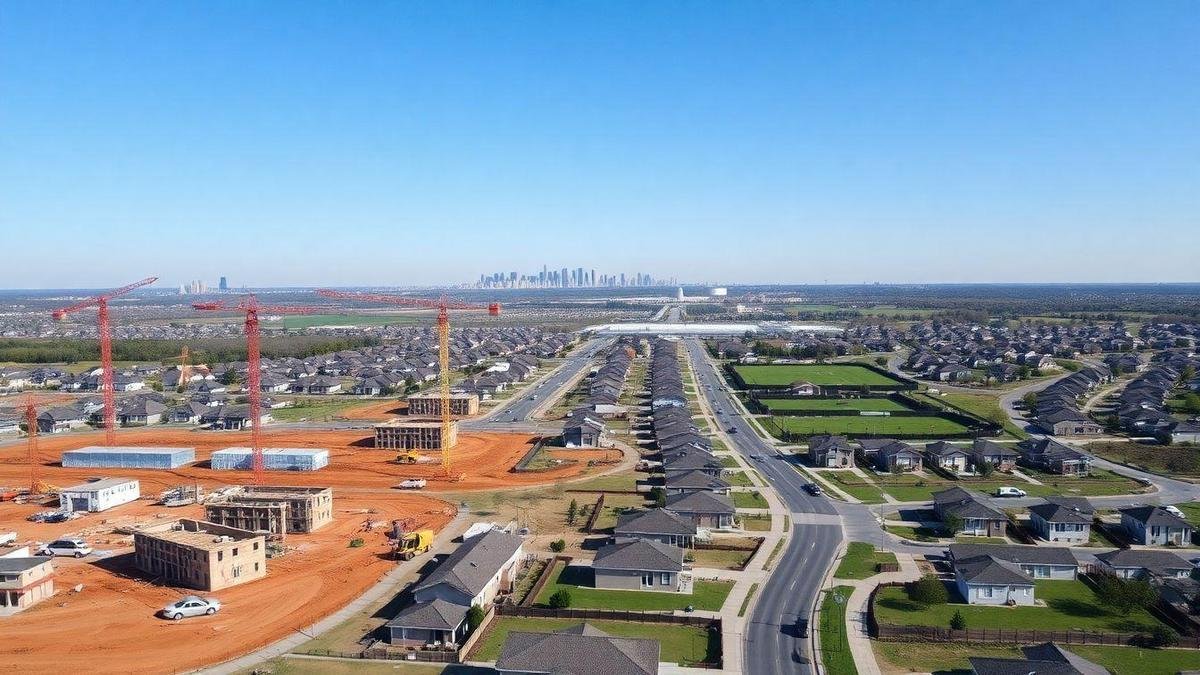
Understanding Land Development Costs in the US
Key Components of Land Development Costs
When delving into land development costs in the US, several key components come into play. Understanding these components helps investors make informed decisions. Here are the primary elements:
- Land Acquisition: The cost of purchasing the land itself.
- Site Preparation: This includes clearing, grading, and excavation.
- Infrastructure Development: Costs for roads, utilities, and drainage systems.
- Permits and Fees: Expenses related to obtaining necessary permits and licenses.
- Construction Costs: Expenses for building structures on the land.
- Financing Costs: Interest and fees related to loans taken for the project.
Factors Influencing Land Development Expenses
Various factors can impact the overall expenses of land development. Recognizing these factors can help investors anticipate costs:
- Location: Urban areas typically have higher costs compared to rural locations.
- Zoning Laws: Regulations can either increase or decrease expenses based on what is allowed. Understanding zoning laws is essential for navigating these costs.
- Market Demand: High demand can drive up land prices and associated costs.
- Environmental Considerations: Costs may rise if environmental assessments or remediation are required.
- Labor Costs: Fluctuations in labor rates can significantly affect overall expenses.
| Factor | Impact on Costs |
|---|---|
| Location | Higher in urban areas |
| Zoning Laws | Can restrict or enhance use |
| Market Demand | Increases prices |
| Environmental Issues | May require additional funds |
| Labor Costs | Can vary widely |
Importance of Accurate Cost Estimation
Accurate cost estimation is crucial in land development. It helps investors budget correctly and avoid unexpected financial pitfalls. A well-prepared land development cost breakdown in the US can guide decision-making and strategy. By preparing for potential costs, investors can navigate challenges more effectively and enhance their chances of success.

Breakdown of Land Acquisition Costs
What Are Land Acquisition Costs?
Land acquisition costs refer to the total expenses incurred when purchasing a piece of land. These costs go beyond just the purchase price of the land itself. They include various fees and charges that can add up quickly. Understanding these costs is essential for anyone involved in land development, especially global investors looking to make informed decisions. For more details on investing strategies, check out foreign investment insights.
How to Calculate Land Acquisition Costs
Calculating land acquisition costs involves several key components. Here’s a breakdown of what to consider:
| Cost Component | Description |
|---|---|
| Purchase Price | The agreed amount for the land. |
| Closing Costs | Fees for legal services, title insurance, and recording fees. |
| Surveying Fees | Costs for land surveys to determine boundaries and features. |
| Environmental Assessments | Fees for evaluating potential environmental issues. |
| Financing Costs | Interest and fees associated with loans or mortgages. |
| Taxes | Property taxes that may be due upon acquisition. |
To calculate the total land acquisition cost, simply add all these components together. This will give a clear picture of the overall investment required.
Tips for Reducing Land Acquisition Expenses
- Negotiate Purchase Price: Always try to negotiate the purchase price. Sellers may be willing to lower the price, especially if the land has been on the market for a while.
- Shop Around for Services: Get quotes from multiple service providers for surveying and legal services. This can lead to substantial savings.
- Consider Alternative Financing: Explore different financing options. Some lenders may offer better terms than others, which can reduce overall costs.
- Research Local Tax Incentives: Some areas offer tax breaks or incentives for land development. Researching these can lead to significant savings.
- Perform Due Diligence: Conduct thorough research before purchasing. Understanding zoning laws and potential environmental issues can help avoid costly surprises later.
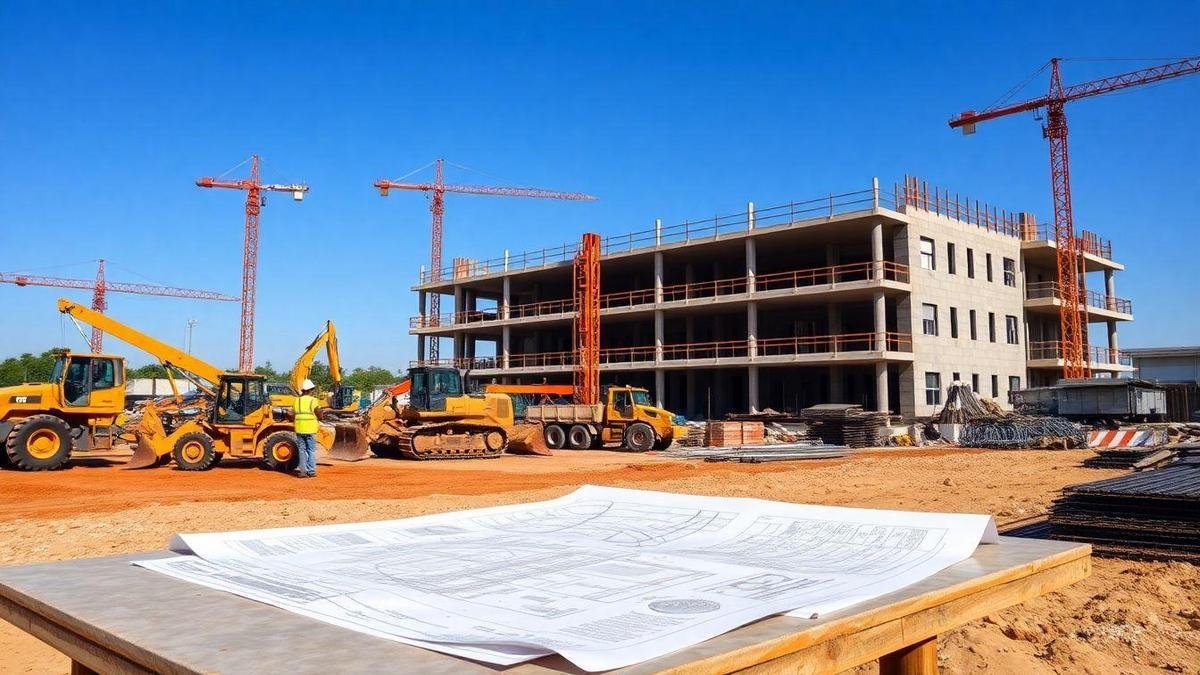
Site Development Costs Explained
Major Elements of Site Development Costs
Site development costs can be a mixed bag. They vary widely based on location, project size, and local regulations. Here are the major elements that contribute to these costs:
- Land Acquisition: Buying the land is often the largest expense. Prices can differ greatly depending on the area.
- Site Preparation: This includes clearing the land, grading, and excavating. It sets the stage for what comes next.
- Utilities Installation: Bringing in water, electricity, and sewage can add significant costs. Each utility has its own set of requirements.
- Permitting and Fees: Local governments often require permits, which can add up quickly. These are necessary to follow local laws.
- Construction Costs: This covers everything from buildings to roads. It is often the most substantial part of the budget.
Here’s a simple table to illustrate the breakdown:
| Element | Estimated Cost |
|---|---|
| Land Acquisition | $500,000 – $5,000,000 |
| Site Preparation | $50,000 – $500,000 |
| Utilities Installation | $20,000 – $200,000 |
| Permitting and Fees | $5,000 – $50,000 |
| Construction Costs | $100,000 – $10,000,000 |
Common Challenges in Site Development
Navigating site development can be tricky. Investors often face challenges that can impact costs and timelines. Here are some common hurdles:
- Zoning Issues: Understanding local zoning laws is crucial. Changes can delay projects and increase costs.
- Environmental Regulations: Protecting natural resources is a priority, but it can also complicate development.
- Weather Delays: Bad weather can halt work. This can lead to increased costs and longer timelines.
- Labor Shortages: Finding skilled workers can be tough. This can drive up labor costs and slow down progress.
Strategies for Managing Site Development Expenses
To keep costs in check, investors can adopt several strategies:
- Thorough Planning: Detailed planning helps identify potential issues early. This can save time and money.
- Budgeting Wisely: Creating a clear budget and sticking to it is essential. This helps avoid unexpected expenses.
- Hiring Experienced Professionals: Working with experts can streamline the process. Their knowledge can prevent costly mistakes.
- Regular Monitoring: Keeping an eye on expenses can help identify problems before they escalate.
By being proactive and informed, investors can navigate the complexities of site development more smoothly.
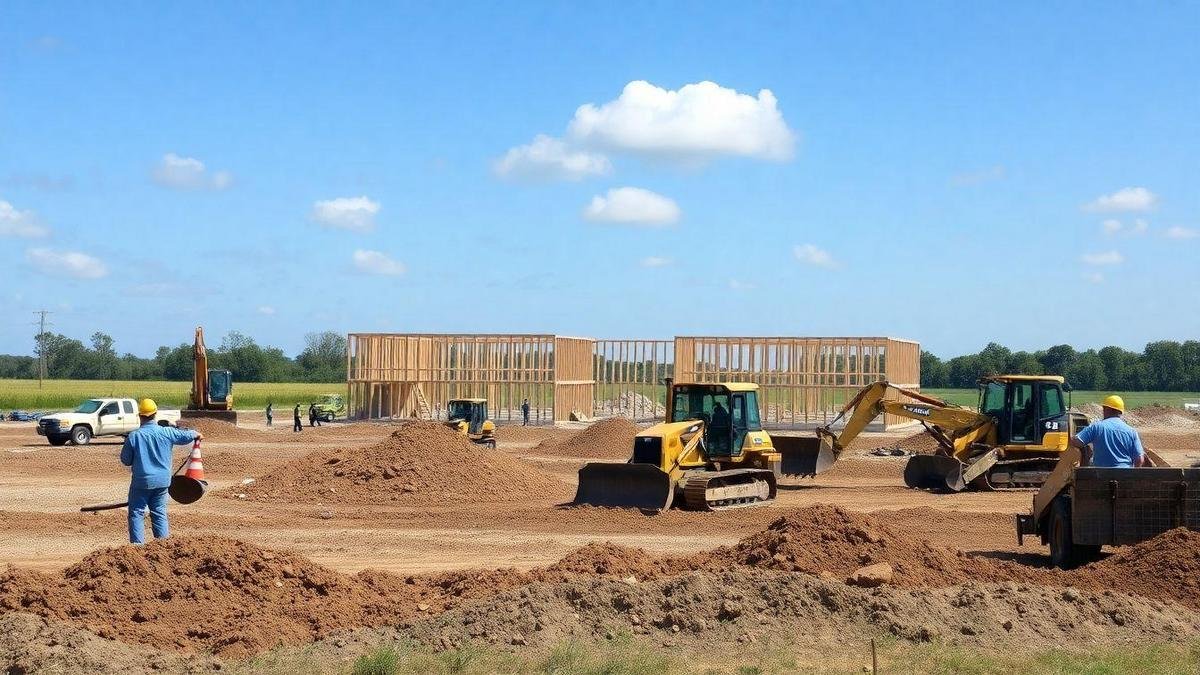
Construction Costs in Land Development
Overview of Construction Costs
Construction costs play a crucial role in land development. They encompass all expenses involved in building projects, from materials to labor. Understanding these costs is vital for investors. A clear grasp of what drives these expenses can lead to smarter investment decisions.
Factors Affecting Construction Expenses
Several factors influence construction costs. Here are some key elements to consider:
- Location: Costs vary significantly based on geographical area. Urban settings often come with higher expenses due to demand.
- Material Prices: Fluctuations in the market can impact material costs. For instance, wood and steel prices can change based on global supply chains.
- Labor Costs: Wages for skilled workers can differ from one region to another. Areas with a labor shortage may see increased costs.
- Regulatory Fees: Permits and inspections can add to the overall budget. Investors should be aware of local regulations that might affect costs.
| Factor | Impact on Costs |
|---|---|
| Location | Higher in urban areas |
| Material Prices | Market fluctuations |
| Labor Costs | Varies by region |
| Regulatory Fees | Adds to overall budget |
Ways to Optimize Construction Budgeting
Investors can adopt various strategies to optimize their construction budgets. Here are some effective methods:
- Detailed Planning: A thorough plan can prevent unexpected expenses. This includes timelines, material choices, and labor needs.
- Competitive Bidding: Engaging multiple contractors helps secure the best price. It’s wise to compare quotes before making decisions.
- Value Engineering: This involves assessing project functions and costs to find more affordable solutions without sacrificing quality.
- Regular Reviews: Frequent budget assessments allow for adjustments as needed. Keeping an eye on spending can help stay within limits.

Infrastructure Development Expenses
Types of Infrastructure Development Costs
Infrastructure development costs can be categorized into several types. These costs play a crucial role in any land development project. Here are some common types:
- Site Preparation Costs: This includes clearing land, grading, and excavation.
- Utilities Installation: Costs associated with water, electricity, sewage, and gas lines.
- Road Construction: Expenses related to building access roads and internal streets.
- Stormwater Management: Costs for drainage systems and other water management solutions.
- Landscaping and Green Spaces: Expenses for parks, trees, and other outdoor areas.
These categories help investors understand where their money goes and how to plan effectively.
Importance of Infrastructure in Land Development
Infrastructure is the backbone of any successful land development project. It supports the growth and usability of the land. Without proper infrastructure, even the best land can become a burden.
- Accessibility: Good infrastructure allows easy access to the property, attracting buyers and tenants.
- Utility Services: Reliable utilities make the land more appealing for residential or commercial use.
- Environmental Management: Proper infrastructure helps manage water and waste, keeping the area safe and clean.
Investors must recognize that solid infrastructure not only boosts property value but also enhances the quality of life for future occupants.
Budgeting for Infrastructure Development
When planning for infrastructure development, budgeting is key. A well-thought-out budget helps avoid surprises down the road. Here are some steps to consider:
- Estimate Costs: Gather data on typical costs for each type of infrastructure.
- Include Contingencies: Set aside funds for unexpected expenses.
- Prioritize Needs: Focus on the most critical infrastructure first.
- Review Regularly: Keep an eye on costs and adjust the budget as necessary.
Here’s a simple table to illustrate a basic budget breakdown:
| Cost Type | Estimated Cost |
|---|---|
| Site Preparation | $50,000 |
| Utilities Installation | $30,000 |
| Road Construction | $40,000 |
| Stormwater Management | $20,000 |
| Landscaping | $15,000 |
| Total Estimated Cost | $155,000 |
By following these steps and using a detailed budget, investors can navigate the often tricky waters of land development costs.

Zoning and Permitting Costs
Understanding Zoning Regulations
Zoning regulations are rules that dictate how land can be used. They vary from one area to another and can affect what can be built, where, and how. For global investors, comprehending these regulations is crucial. They set the stage for what types of developments are allowed.
For example, a piece of land may be zoned for residential use, meaning only homes can be built. If an investor wants to build a shopping center instead, they will face hurdles. Knowing the zoning laws helps avoid costly mistakes. For a deeper understanding of zoning, refer to land development insights.
The Permitting Process and Its Costs
Once zoning is understood, the next step is the permitting process. This is where an investor requests permission to develop land. It often involves several steps, including:
- Submitting Applications: Investors must fill out forms and provide plans.
- Review by Officials: Local authorities review the plans to ensure they meet regulations.
- Public Hearings: Sometimes, the public can voice their opinions about the project.
Each step can come with costs. These may include fees for applications, surveys, and inspections. Here’s a simple breakdown of potential costs:
| Cost Type | Estimated Cost |
|---|---|
| Application Fees | $500 – $5,000 |
| Survey Costs | $1,000 – $10,000 |
| Inspection Fees | $200 – $2,000 |
| Total Estimated Costs | $1,700 – $17,000 |
Understanding these costs helps investors budget effectively.
Tips for Navigating Zoning and Permitting Expenses
To keep costs manageable, here are some helpful tips:
- Research Local Laws: Each area has its own rules. Knowing them upfront can save money.
- Consult Experts: Hiring professionals can help navigate the process smoothly.
- Plan for Delays: Permitting can take longer than expected. Budget extra time and funds for this.
By following these tips, investors can better handle the complexities of zoning and permitting costs.

Environmental Impact Fees
What Are Environmental Impact Fees?
Environmental Impact Fees are charges imposed on developers to offset the costs associated with the environmental effects of their projects. These fees are designed to cover the potential harm that new developments might cause to the environment, such as pollution, habitat destruction, and increased traffic. By implementing these fees, local governments aim to protect natural resources and promote sustainable development.
How Environmental Fees Affect Land Development Costs
When developers plan a project, they must consider Environmental Impact Fees as part of their overall budget. These fees can significantly alter the land development cost breakdown in the US. The amount charged can vary based on several factors, including:
- Location: Urban areas may have higher fees due to increased environmental concerns.
- Type of Development: Residential, commercial, and industrial projects may incur different fees based on their potential impact.
- Size of the Project: Larger projects typically face higher fees.
Here’s a simple table to illustrate how these factors can influence costs:
| Factor | Impact on Fees |
|---|---|
| Location | Higher in urban areas |
| Type of Development | Varies by category |
| Size of the Project | Larger = Higher fees |
Planning for Environmental Impact Fees
Developers need to plan for these fees early in the development process. By doing so, they can avoid unexpected costs that might derail their projects. Here are some strategies to consider:
- Research Local Regulations: Understanding the specific fees in the area can help developers budget accurately.
- Engage with Local Authorities: Open communication with city planners can provide insights into potential fees and necessary permits.
- Incorporate Fees into Financial Models: Including these costs in financial projections ensures that developers remain on track.
In conclusion, Environmental Impact Fees play a crucial role in land development, affecting costs and planning strategies. By being aware of these fees, developers can navigate the complexities of their projects more effectively.
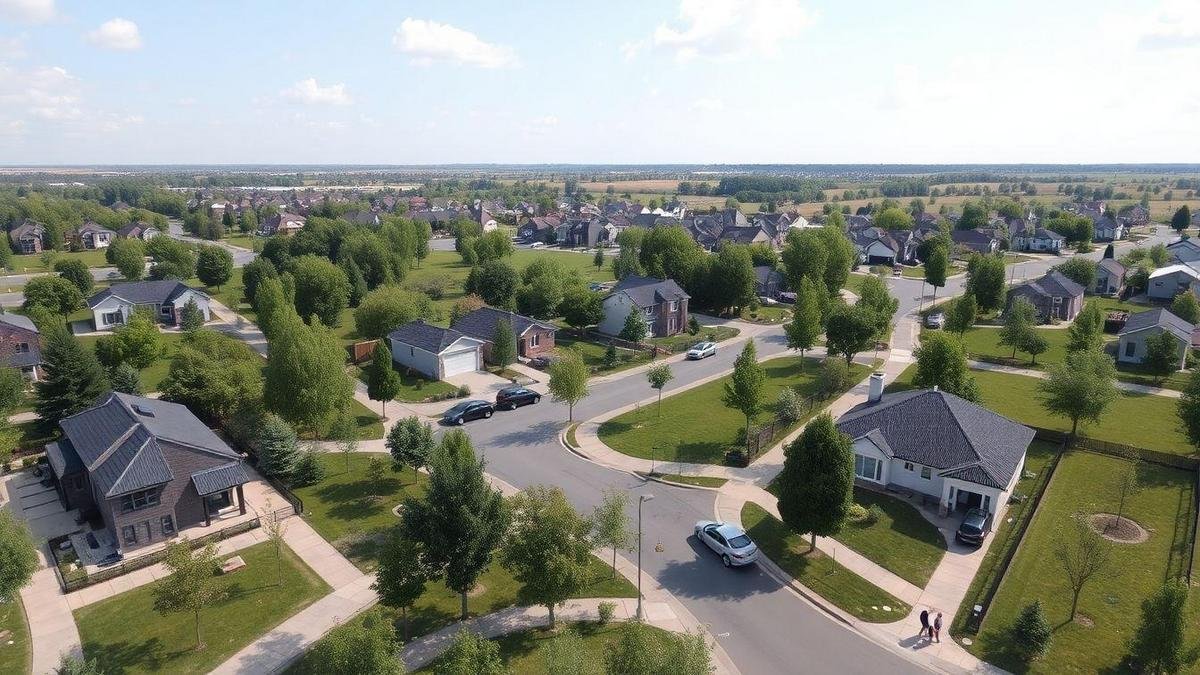
Effective Land Development Budgeting
Creating a Comprehensive Land Development Budget
Creating a comprehensive land development budget is crucial for investors. It involves outlining all expected costs associated with a project. This budget should cover various aspects, including:
- Land Acquisition Costs: The price of purchasing the land.
- Site Preparation: Clearing, grading, and preparing the site for construction.
- Construction Costs: Expenses related to building structures.
- Permits and Fees: Costs for obtaining necessary permits and approvals.
- Utilities and Infrastructure: Expenses for connecting to water, electricity, and roads.
- Contingency Funds: Extra money set aside for unexpected costs.
By breaking down these categories, investors can gain a clearer picture of the land development cost breakdown in the US. This clarity helps in making informed decisions and avoiding costly mistakes. For more insights on budgeting, explore tools for developers.
Tools for Tracking Land Development Costs
Investors can utilize various tools to keep track of land development costs. These tools help in maintaining a clear overview of finances. Some effective options include:
- Spreadsheet Software: Programs like Microsoft Excel or Google Sheets allow for easy tracking and adjustments.
- Project Management Software: Tools such as Trello or Asana help in managing tasks and budgets simultaneously.
- Dedicated Budgeting Apps: Applications like QuickBooks can provide detailed financial reports and insights.
Using these tools can streamline the budgeting process, making it easier to monitor expenses and stay within budget.
Importance of Regular Budget Reviews
Regular budget reviews are essential. They help investors stay on track and adjust to any changes. By reviewing the budget frequently, they can:
- Identify overspending early on.
- Adjust forecasts based on actual expenses.
- Ensure that the project remains financially viable.
In the fast-paced world of land development, staying proactive with budget reviews can save time and money.

Long-Term Financial Planning for Investors
Benefits of Long-Term Financial Planning
Long-term financial planning offers numerous advantages for investors in land development. It acts as a roadmap, guiding them through the financial landscape. By focusing on the future, investors can anticipate market shifts and make informed decisions. Here are some key benefits:
- Stability: A long-term plan provides stability in an unpredictable market.
- Informed Decisions: Investors can analyze trends and adjust strategies accordingly.
- Risk Management: Planning helps identify potential risks and develop strategies to mitigate them.
Analyzing Return on Investment in Land Development
Understanding the return on investment (ROI) is crucial for any investor. It helps gauge the effectiveness of their investments in land development. To analyze ROI, investors should consider various factors, including:
| Factor | Description |
|---|---|
| Initial Investment | The total amount spent on land and development. |
| Revenue Generated | Income from selling or leasing the developed land. |
| Operating Costs | Ongoing expenses related to maintenance and management. |
| Market Trends | Current and projected market conditions. |
By evaluating these factors, investors can gain insights into the potential profitability of their land development projects. For a more detailed analysis, consider reviewing ROI strategies.
Strategies for Sustainable Land Development Investments
Sustainable land development is becoming increasingly important. Investors should adopt strategies that promote long-term viability while maximizing returns. Some effective strategies include:
- Community Engagement: Involving local communities can lead to projects that meet their needs and gain support.
- Environmental Considerations: Prioritizing eco-friendly practices can enhance property value and appeal.
- Diversification: Investing in various types of land can spread risk and open new opportunities.
By implementing these strategies, investors can not only improve their financial outcomes but also contribute positively to the environment and society.
In the End…
Understanding the land development cost breakdown in the US is pivotal for anyone venturing into real estate. By grasping the key components—from land acquisition to construction expenses—investors can navigate the financial landscape with greater confidence. Recognizing the factors that influence these costs, such as location, market demand, and zoning laws, allows for more accurate budgeting and effective decision-making.
Moreover, employing strategies to manage and optimize costs can significantly enhance the chances of a successful investment. With a comprehensive approach to budgeting and regular reviews, investors can stay ahead of potential pitfalls. Ultimately, the journey through land development is multifaceted and requires diligence, but the rewards can be substantial.
For more insights and articles that can further enrich your knowledge on land development, visit Land Development Hub.
Eduardo Bugallo, PhD.
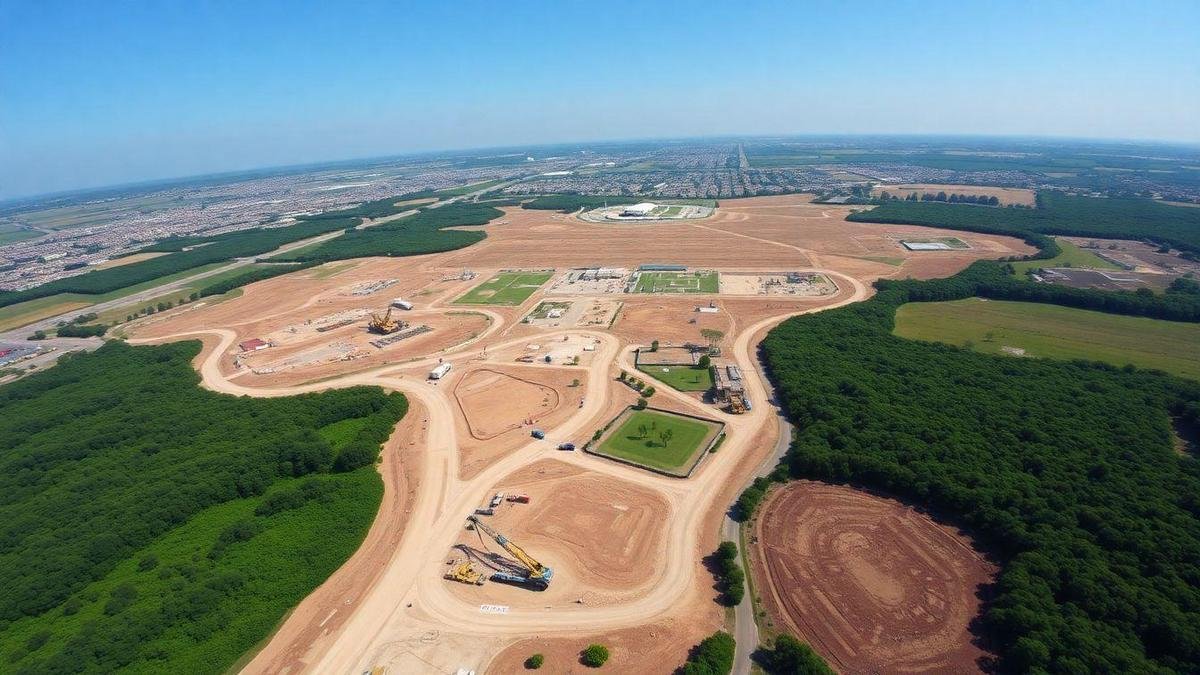
No responses yet